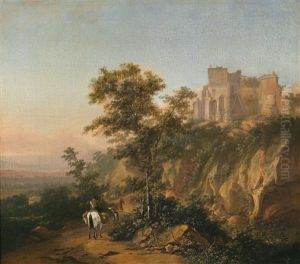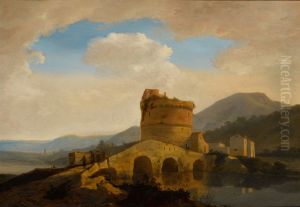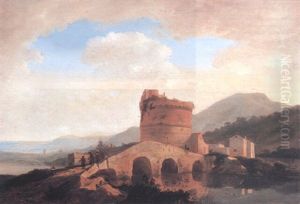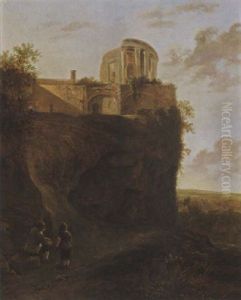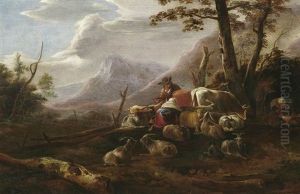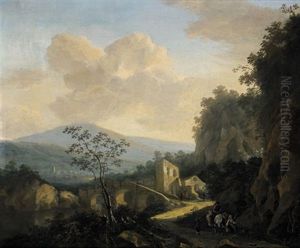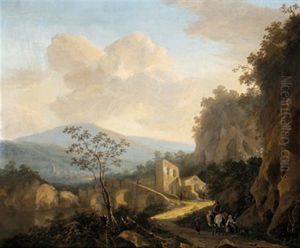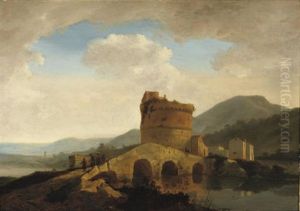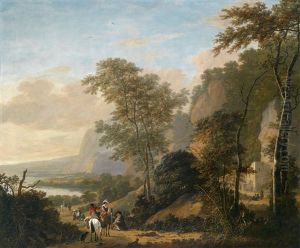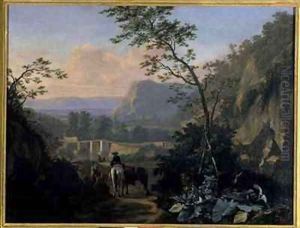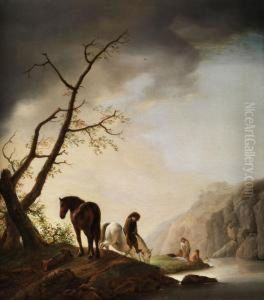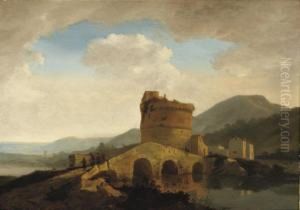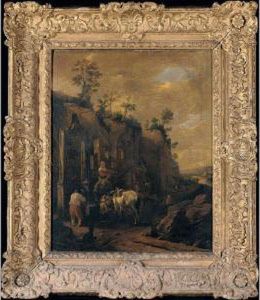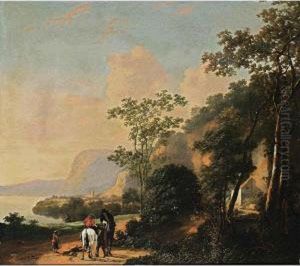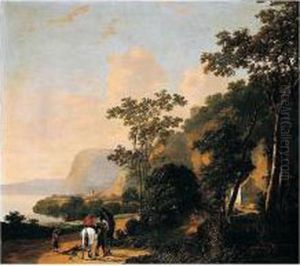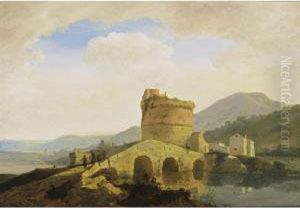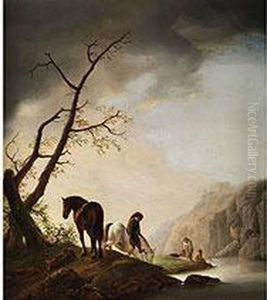Adriaen van Eemont Paintings
Adriaen van Eemont, a relatively lesser-known figure in the annals of art history, was born in 1626 in Dordrecht, a city in the Netherlands renowned for its vibrant artistic community during the Dutch Golden Age. His life and career unfolded during a period that is often considered the zenith of Dutch painting, characterized by an unprecedented outpouring of artistic talent and innovation. Despite the shadow cast by more prominent contemporaries, van Eemont carved out his own niche, contributing to the rich tapestry of 17th-century Dutch art.
Van Eemont's works are scarce, and details about his life are similarly sparse, a common predicament for many artists of his time. However, from the surviving pieces and records, it is evident that his artistic output was primarily focused on landscapes and genre scenes, following the traditions established by the likes of Jacob van Ruisdael and Pieter de Hooch. Van Eemont's landscapes often depicted the Dutch countryside, with an emphasis on the interplay between light and shadow, a testament to the influence of the chiaroscuro technique that was popularized by Italian masters and enthusiastically adopted by Dutch painters.
Despite the limited recognition during his lifetime and in the centuries that followed, recent scholarship has begun to shed more light on van Eemont and his contributions to Dutch art. His paintings, characterized by meticulous attention to detail and a profound sense of tranquility, offer a window into the everyday life and natural beauty of 17th-century Netherlands. Today, his works are considered valuable for their historical significance and artistic merit, providing insight into the broader landscape of Dutch Golden Age painting.
Adriaen van Eemont's death in 1679 marked the end of a career that, while not as celebrated as some of his contemporaries, contributed to the rich mosaic of Dutch art. His legacy, encapsulated in the few but meaningful works that survive, continues to be re-evaluated by art historians and enthusiasts alike. As more research brings to light the lives and works of artists like van Eemont, our understanding of the Dutch Golden Age's artistic landscape becomes ever more nuanced and comprehensive.
